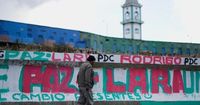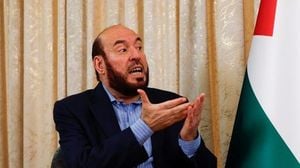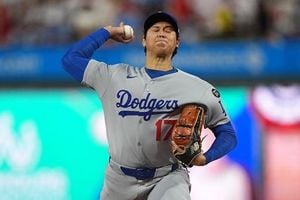Bolivia stands at a pivotal crossroads as voters prepare to cast their ballots in a historic presidential runoff on Sunday, October 19, 2025. For the first time in nearly two decades, the nation’s highest office will be decided without a candidate from the Movement Toward Socialism (MAS), the left-wing coalition that has dominated Bolivian politics since Evo Morales swept to power in 2005. Instead, two conservative contenders—former president Jorge “Tuto” Quiroga of Alianza Libre and Rodrigo Paz of the Christian Democratic Party (PDC)—are vying to lead a country grappling with its worst economic crisis in forty years and a dramatically shifting political landscape.
The stakes are high. According to a Cismori Institute poll conducted just a week before the election, Quiroga holds a lead with 44.9% of the vote, while Paz trails at 36.5%. Approximately 7.5 million Bolivians, including 369 residents living abroad in 22 countries, are expected to participate in the runoff, which is being closely monitored by observer missions from the Organization of American States and the European Union, as reported by Nova News.
The runoff follows a first round of voting on August 17, 2025, that delivered a resounding message: the MAS era is over. Voter turnout was a robust 88.89%, with 6,464,043 ballots cast out of 7,937,138 eligible voters. In that round, Paz captured 1,717,532 votes (32.06%), Quiroga took 1,430,176 (26.7%), and Samuel Doria Medina of the Unity Alliance secured 1,054,568 (19.69%). Notably, invalid and blank votes made up a significant portion—1,371,049 (19.87%) and 172,835 (2.5%) respectively—hinting at widespread voter dissatisfaction and the unpredictable mood of the electorate.
For Bolivia’s Indigenous population, which once formed the backbone of MAS support, the current election marks a profound transformation. As The Christian Science Monitor observes, the so-called “Indigenous vote” is no longer a monolith. “Before, being Indigenous meant following MAS,” says Toribia Lero Quispe, a centrist-party senator and human rights activist. “Today, it means being a person who thinks for oneself, and who can choose any political party and still make their needs or challenges as an Indigenous person known.”
This shift is rooted in two decades of social and political gains. Under Morales, Bolivia was hailed as an “economic miracle,” with poverty rates slashed and social spending expanded through the nationalization of key industries and a commodities boom. The 2009 Constitution recognized Bolivia as the Plurinational State, granting official status to 36 Indigenous languages alongside Spanish and providing autonomy for Indigenous communities to administer justice under their own systems. Cash transfer programs benefited more than half the population, drastically reducing both extreme and moderate poverty.
Yet the MAS’s long grip on power also bred complacency and, eventually, backlash. As former interim president Eduardo Rodríguez Veltzé tells The Christian Science Monitor, “Their concentrated power turned into vicious practices like packing the courts, launching political trials against political enemies, and exiling people.” Discontent simmered over policies that some perceived as reverse discrimination and over Morales’s controversial attempt to extend his presidency beyond constitutional limits, which led to a political crisis in 2019.
By the time of the August 2025 vote, MAS’s fortunes had plummeted. The party won only two legislative seats and garnered a mere 3% of the presidential ballots—a stark reversal for a movement that once commanded vast majorities. Preliminary parliamentary estimates suggest that no party will enjoy an absolute majority: the PDC is expected to secure at least 45 deputies and 13 senators, Libre 37 deputies and 11 senators, and the Unity Alliance 28 deputies and 6 senators. MAS, torn by internal conflict between Morales loyalists and supporters of outgoing president Luis Arce, may end up with just one seat in the Chamber.
Economic hardship has fueled much of the electorate’s desire for change. Inflation soared to 24% in June 2025, gas shortages have led to long lines for diesel in cities like El Alto, and the country’s international reserves have been depleted, making it difficult to import basic goods. “People reacted to the economic situation in this election, saying ‘After 20 years of the same party that depleted everything, now’s our chance to change things,’” says Antonio Saravia, a former vice-presidential candidate.
Both Quiroga and Paz promise to steer Bolivia away from the socialist policies of the past two decades, but their approaches differ markedly. Quiroga, who served as president from 2001 to 2002, is pitching a $12 billion plan aimed at eliminating fuel lines, curbing high prices, and attracting international support from the IMF, World Bank, and Inter-American Development Bank. He advocates for maximum economic openness, defending foreign credit and individual property, and proposes reducing VAT to 10%. “International support is crucial,” Quiroga emphasized during the final debate on October 12, 2025, as reported by Nova News.
Paz, meanwhile, has surprised many with his rapid ascent. Previously polling below 10%, he surged in the first round by capturing rural voters often overlooked in political analyses. His running mate, Edmer Lara, a former police lieutenant known for anti-corruption advocacy, has also played a vital role in broadening the ticket’s appeal. Paz’s economic vision centers on “popular capitalism” and decentralization, with proposals for tax amnesty, tax cuts, and a mixed investment model for lithium that includes environmental protection and tourism. He has pledged not to seek IMF collaboration, instead focusing on “redistributing” profits 50/50 between regions and the central government. “My economic program does not include collaboration with the IMF,” Paz stated during the debate, underscoring his intent to protect Bolivia’s sovereignty.
Both candidates have addressed issues of justice and energy autonomy. Quiroga calls for a merit-based reform of the judiciary and digitalization of trials, while Paz wants a national summit for justice reform and increased funding for the sector. On energy, Paz envisions a reformed hydrocarbons law with regional input and a corruption-free national company, while Quiroga promises an “energy renaissance” and a national lithium battery industry, proposing to distribute $1.5 billion in shares to citizens.
The outcome of Sunday’s vote will not only determine Bolivia’s economic direction but also test the resilience of its pluralistic democracy. As Elizabeth Jiménez Zamora, a professor at Universidad Mayor de San Andrés, explains, “The popular classes wanted an alternative to MAS, but someone that still represents them—not someone excessively to the right who won’t recognize the past or recent gains.”
For many Bolivians, especially Indigenous citizens, the election is less about nostalgia for the past than about securing a future where hard-won rights and cultural recognition endure. As Noemi Quispe Quispe, a young Aymara journalist, puts it, “Regardless of who wins this weekend, no election can take that away.”
As Bolivia heads to the polls, the world will be watching to see how the country balances the promise of change with the legacy of transformation that has shaped its last twenty years.





